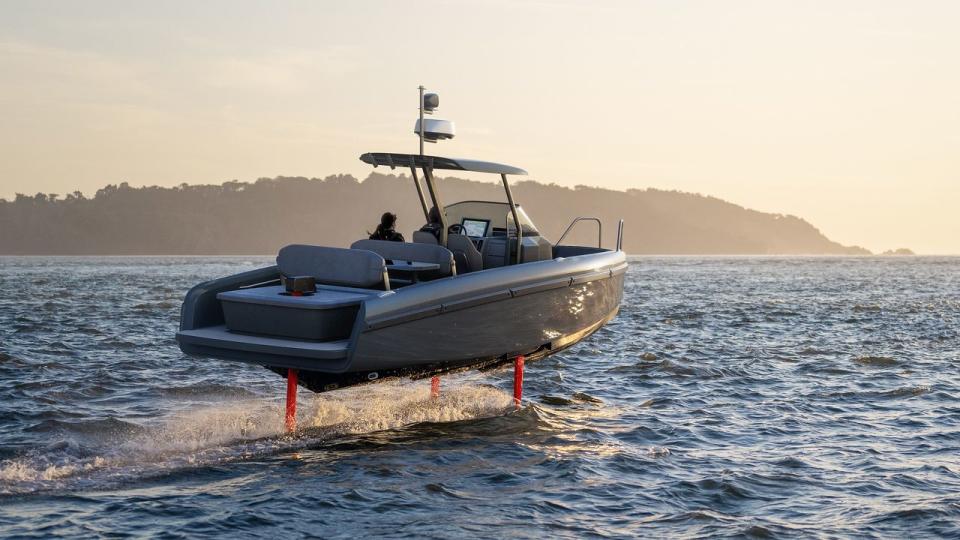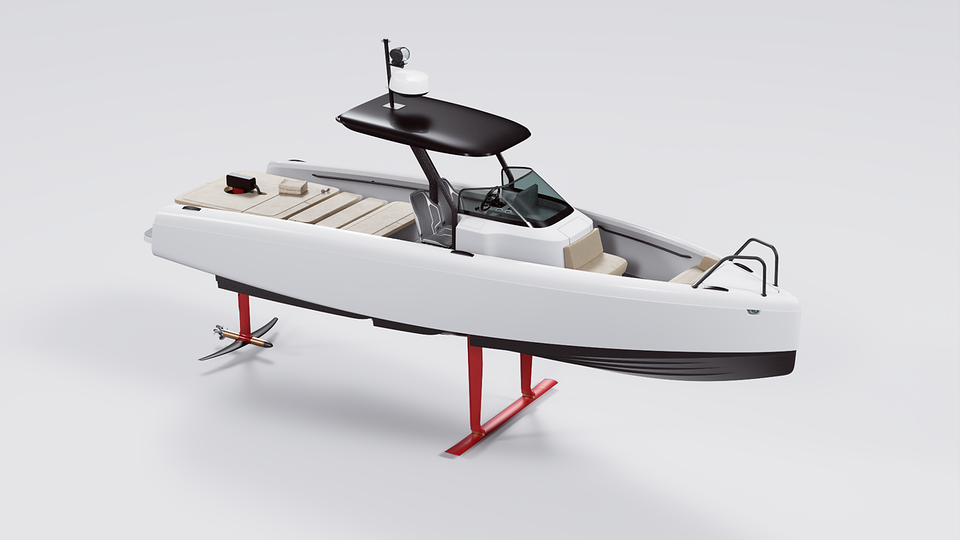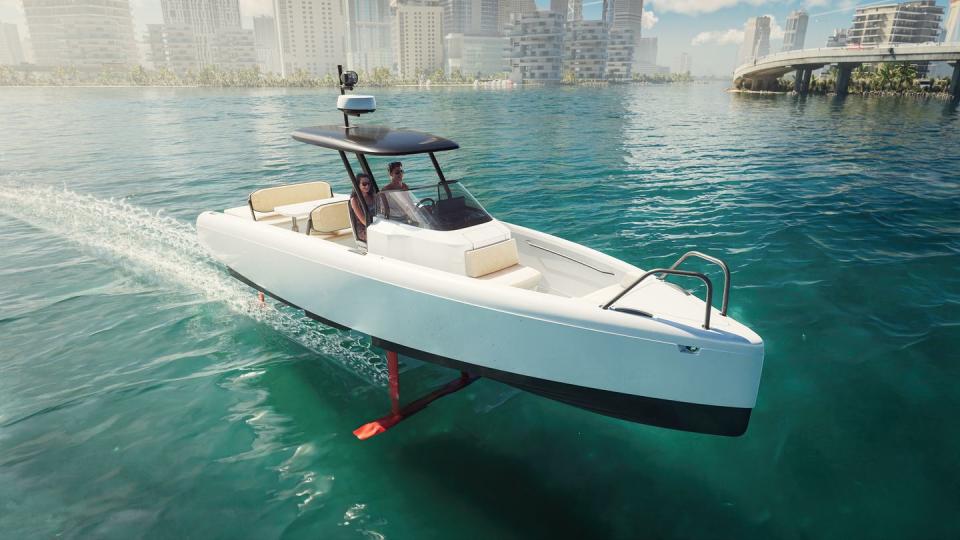Fly Over the Waves Like a Pterodactyl in the Candela C-8 Hydrofoil Electric Speedboat

The C-8 is an electric, carbon-fiber, hydrofoil boat that maximizes efficiency as it flies over the water.
It uses the 69-kWh battery pack from the Polestar 2.
Price is $395,000.
Ever since the first cave man stretched a yak skin over a bunch of curved sticks and made the first boat, not much has changed. Sure, there was the outboard motor—that was a big help. But the basic, generic, “boat” was still just a hole in the water (into which you pour money!) that allowed you to float.
That’s all about to change. Maybe.
Consider the hydrofoil. Hydrofoils are much more efficient than old-school “boats.” Your typical “boat” plows through water, shoving thousands of pounds of the heavy liquid out of the way in its plodding slog toward distant horizons.

This requires tremendous amounts of horsepower. Imagine lifting and throwing aside just one gallon of water, then imagine lifting and tossing aside thousands of gallons of water per second. That’s what the traditional boat hull has to do.
A hydrofoil rises above all that. Once a hydrofoil gets up to a certain speed—say 12 knots or so—it lifts up and out of the water, so the amount of water displaced per foot of forward progress is almost negligible.
How Does It Work?
Of course you remember Bernoulli’s Equation Po = P1 + ½rv1² + rgy1 = P2 + ½rv2² + rgy2, where Po equals stagnation pressure (Pa or lbf/ft2), etc. No need to wade through all that again, you already know it. The idea is efficiency, and hydrofoils have it in spades. Or foils.
Foils lower down into the water fore and aft, you crank the electric motors and, using Bernoulli, the foils create lift, like an airplane wing, with minimum drag, and lift the boat out of the water. If you don’t have to push all that water out of the way, resistance plummets. The C-8 uses as much power foiling at 19 knots as it does plowing through the water at 4 knots. It’s like the difference between flying and trying real hard to run as fast as you can while carrying all your waterskiing gear. It’s great.
But no one has taken this efficiency and put it into a boat that just about any semi-affluent boater could afford. Sure, there are a few hydrofoil ferries operating here and there around the world. But something the average Joe Boat Owner could buy for the price of a well-equipped Bentley? Not out there.
Until now. A Swedish company called Candela is well into its second hydrofoil boat model, the C-8, followup to the (you guessed it) C-7, and on sale right now. The C-8 is 100% electric. It’s 28 feet long, 8.2 feet wide (“The Beam,” for all you pirates), and weighs just 3858 pounds, including its 69-kWh battery.
The battery comes from fellow Swede Polestar (which is part of Volvo, which is part of Geely). In fact, it’s the same battery you’ll find in the Polestar 2 electric car, which makes perfect sense—why reinvent the battery? Just build the boat around it.
Those 69 kWh are charged on the dock via 11-kW 3-phase AC charging or via the Polestar DC charging if you’re in a hurry. They say they are working with docks across America to install chargers, but you can just plug yours in at your home dock. All marinas have power outlets at their docks already, don’t they?

The 69-kWh battery is good for 57 nautical miles of cruising, or 65.6 land miles for you landlubbers. That’s at 22 knots cruising speed, or 25.3 mph. Top speed is 30 knots, or 34.5 mph. So, from Los Angeles Harbor it’ll get you to Catalina and back, for instance. Or from Woods Hole to Martha’s Vineyard. Or from Monte Carlo to St. Tropez. But not from West Palm Beach to Freeport.

 Yahoo Autos
Yahoo Autos 